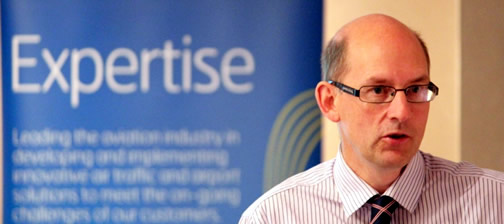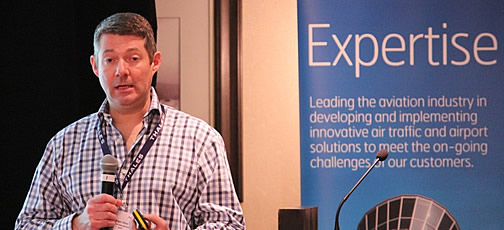Developing a global safety strategy to address future challenges
8 November 2013The ATM world is undergoing unprecedented change. We are subject to new competing and conflicting demands, new regulations and regulators and a pace of technological change which our industry has not previously experienced.
NATS manages some of the most complex airspace in the world and our safety performance, by our current measures, continues to be exceptional. However, this presents its own challenges and we must guard against any hubris or creeping complacency. Given the amount of change now and on the horizon, and the predicted growth in air traffic, how do we continue to improve our safety performance? We cannot take for granted or just assume that the future will be safe – it will require hard work and a long term vision to make sure it is safe.
In anticipation of these challenges, we have embarked on a comprehensive and forward-thinking strategic safety programme to complement our more tactical, short-term plans. The strategy has been developed through consultation within NATS and with our global partners and has been informed by recent reports on safety in other industries, as well as the latest thinking in academia.

The safety strategy is both revolutionary and evolutionary. It recognises what we have done in the past and acknowledges the achievements we have made. It respects the talents and strength of our people and the robustness of the systems and procedures which we use in delivering safety today. However, the strategy sets out the need for a change in the way we think about safety if we are to continue to push for the very highest standards.
In the strategy we propose changing how we measure and control safety in our operation, strengthening the role of people in delivering safety and making best use of the resources we have available to us. We believe we need to become even more proactive in anticipating risk to our operation to help us cope with whatever challenges confront us.
The strategy is not a statement of initiatives or a shopping list of new tools and technologies; we have instead chosen to set out the strategy as a catalyst for change. We hope that by stating the challenge and by posing the question of how we ensure the future is safe, we can gain broad engagement to help deliver the next step in safety performance.

However, NATS cannot take on the challenge alone. When developing the NATS safety strategy we have always known that to deliver the change in safety thinking which we believe our industry needs, we would need to enlist the help of CANSO, our trade associations and our international partners. To that end, we worked closely with CANSO’s European safety group as we developed our safety strategy and they have supported us in maturing the ideas and vision which it contains.
During the CANSO Global Safety Conference this week, we have continued to discuss the safety issues, concerns and challenges which the ATM industry faces. NATS has played a leading role, through CANSO, in setting out a safety vision for the wider ATM industry and in leading the development of a global strategy for how we get there. We will now be working with other ANSPs and our industry partners to deliver it.
Comments
Please respect our commenting policy and guidelines when posting on this website.




14.11.2013
20:15
Nathan
What GCSE/A levels/degrees would I need to take? Would I need to do anything after I leave school to become an air traffic controller?
25.11.2013
12:25
Claire Burton
Talent Acquisition Manager@Nathan
You need to have at least five GCSEs or equivalent at Grade C or above, including English and Maths. You also need to be over 18 years old to apply and meet our other eligibility criteria, which is available on our website at http://www.nats.aero/careers/trainee-air-traffic-controllers/eligibility/
12:25
Claire Burton
Talent Acquisition Manager